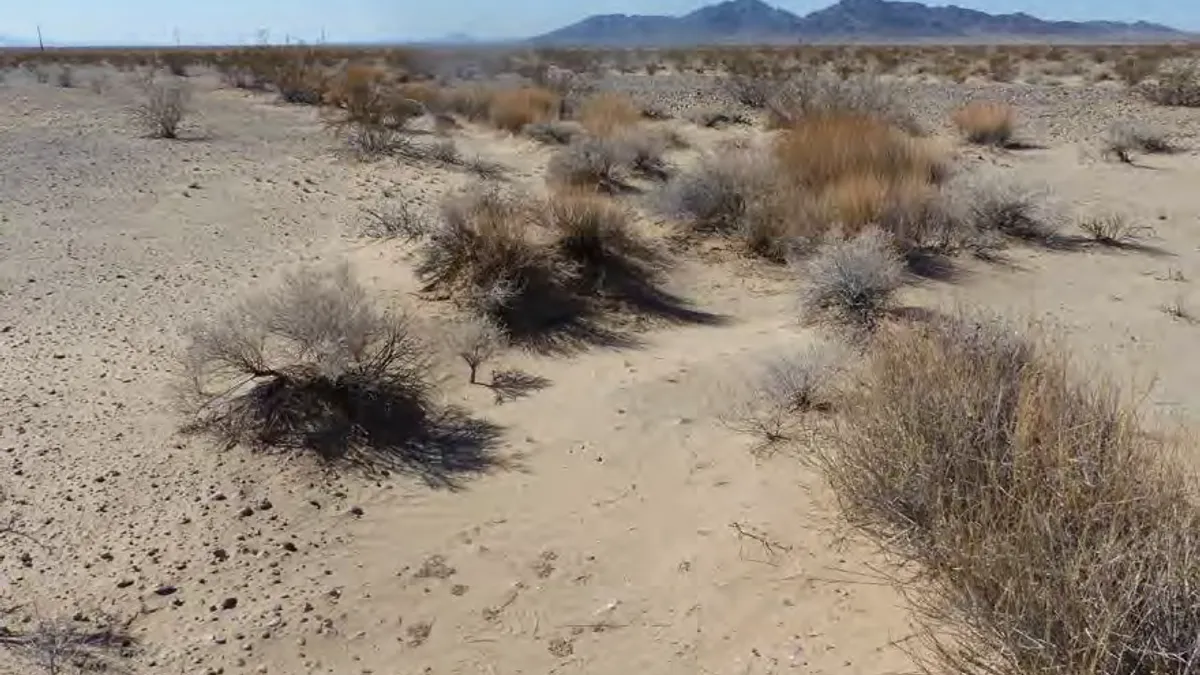Dive Brief:
- The Bureau of Land Management (BLM) last week approved the Desert Quartzite Solar Project, a 450 MW solar photovoltaic facility sited in the California desert.
-
The Natural Resources Defense Council praised the project as a good balance between meeting renewable energy needs and ensuring natural resource protection. The project also aligns with the Trump administration’s “all-of-the-above” energy strategy that includes development on public lands, the BLM said in a press release.
-
Renewables development in California’s desert remains a point of contention in the industry, after the Trump administration’s call last year to revamp a sweeping, Obama-era plan that regulates where energy facilities can be sited.
Dive Insight:
The Desert Quartzite project is a good example of balancing solar development with natural resource protection, Helen O’Shea, director of renewable energy at the NRDC’s land division, told Utility Dive. The BLM and project developer responded to concerns raised by various parties about potential wildlife and wildland impacts and modified the original proposal accordingly, “which is exactly how the [National Environmental Policy Act] permitting process is supposed to work,” she said.
“All of the pieces have come together pretty nicely in this project” in terms of responsibly siting renewable energy facilities, she added.
The project, which is owned by a subsidiary of First Solar, will include a solar photovoltaic facility located in Riverside County, California. The facility will have a 3,800 acre footprint and involve the construction of a 2.7-mile transmission line connecting to a substation operated by Southern California Edison. It is expected to come online in 2022.
The BLM views the project as supporting the Trump administration’s “America First” energy strategy, which places an emphasis on developing energy on public lands, upgrading infrastructure and creating jobs. In 2017, President Trump signed an executive order on energy independence, which stressed the need to avoid “regulatory burdens” that could hinder energy production.
“The Department of the Interior supports moving forward with the Desert Quartzite solar project and other projects that help strengthen communities and promote energy independence. Responsible domestic energy production on Federal lands remains fundamental to our nation’s security,” Casey Hammond, BLM's acting assistant secretary of land and minerals management, said in a written statement.
Building renewable energy facilities in the California desert, however, remains a point of contention in the industry. The process is currently guided by the Desert Renewable Energy Conservation Plan (DRECP), a sweeping set of land-use regulations crafted by the BLM along with the California Energy Commission, California Department of Fish and Wildlife and the U.S. Fish and Wildlife Service and approved in 2016. The DRECP covers around 10.8 million acres of the California desert and designates specific regions as “development focus areas” (DFA), where renewable facilities can be sited, while earmarking others as out of bounds.
The plan was first conceived at the beginning of the Obama Administration, when federal incentives for renewable energy development created a pronounced interest in developing large-scale wind and solar facilities in the California desert, according to O’Shea. Environmentalists began raising concerns that there would be large projects strewn in an ad hoc fashion across the desert, and then-California Governor Arnold Schwarzenegger’s administration identified this as a potential conflict brewing. State and federal agencies worked for around 10 years to create the DRECP as it exists today.
“The plan really is the pinnacle of climate, clean energy and conservation policies in the California desert and it really nicely balances California’s clean energy, and land and wildlife management goals,” O’Shea said.
The Desert Quartzite solar project’s application pre-dated the approval of the DRECP, but the project is located within a DFA.
In February 2018, the BLM announced that it intends to review and possibly amend the DRECP as part of the Trump administration's move to cut down on unnecessary regulations, due to concerns among renewable energy groups and local governments that the plan did not provide enough land for planned facilities. Proposed changes to the plan are yet to be revealed but the effort is aimed at reducing “burdens on all domestic energy development, including solar, wind and other renewables,” Katharine MacGregor, principal deputy assistant secretary for land and minerals at the BLM, said in a press release at the time.
Environmental advocates, however, have panned the decision to revamp the DRECP.
“We think it’s crucially important that the DRECP not be changed, that it be kept in place, as what was finalized in 2016 [came] after more than eight years of input from a wide variety of stakeholders,” Alex Daue, assistant director of energy and climate at the Wilderness Society, told Utility Dive.
Reopening the issue could jeopardize the plan’s conservation achievements and create uncertainties and delays, he added. He also pushed back against the BLM’s suggestion that the move could help the state’s ambitious clean energy goals, noting that the California Energy Commission has stated that the additional desert public lands are not needed to meet the targets.














